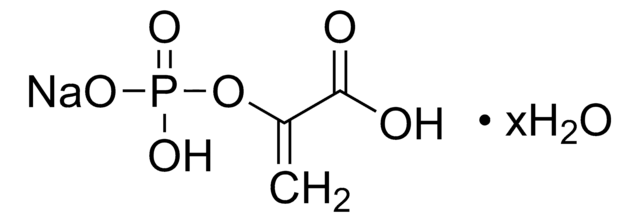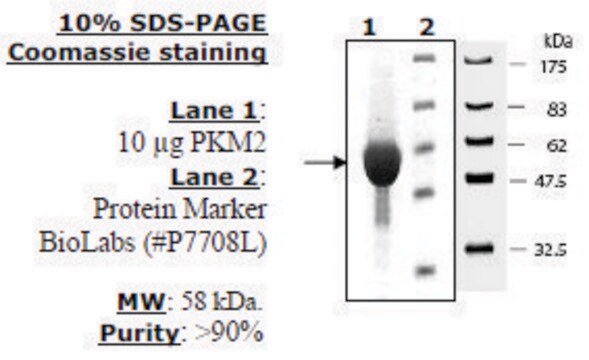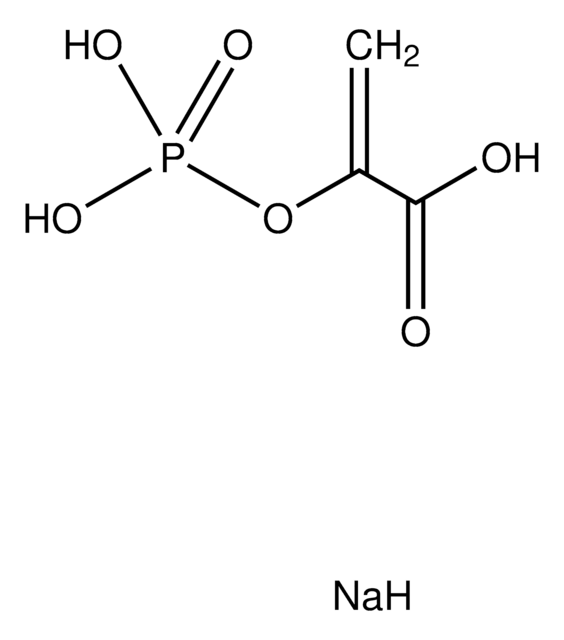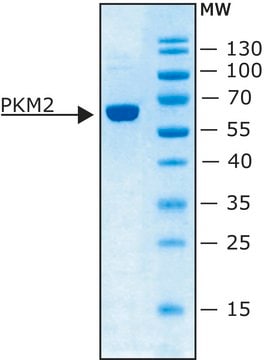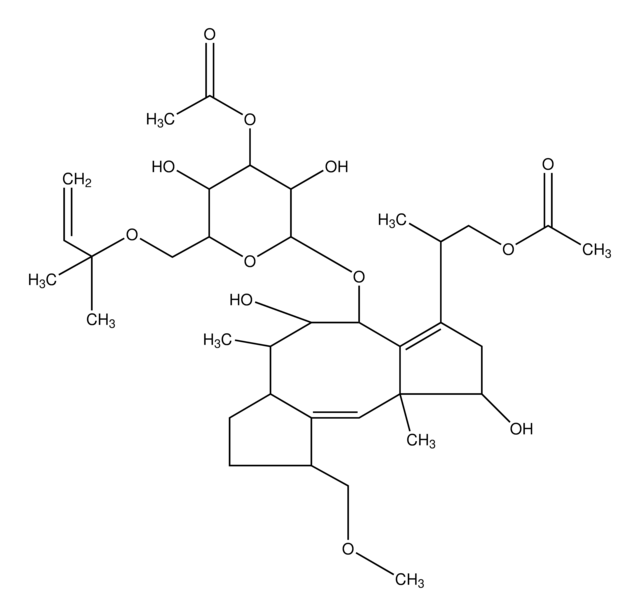P1506
Pyruvate Kinase from rabbit muscle
Type II, ammonium sulfate suspension, 350-600 units/mg protein
Synonyme(s) :
ATP:pyruvate 2-O-phosphotransferase, PK
About This Item
Source biologique
rabbit muscle
Niveau de qualité
Type
Type II
Forme
ammonium sulfate suspension
Activité spécifique
350-600 units/mg protein
Poids mol.
237 kDa
Conditions de stockage
(Tightly closed)
Technique(s)
ligand binding assay: suitable
Couleur
white
Activité étrangère
lactic dehydrogenase, creatine phosphokinase, and myokinase ≤0.01%
phosphoglucomutase ≤0.05%
Température de stockage
2-8°C
Vous recherchez des produits similaires ? Visite Guide de comparaison des produits
Description générale
Pyruvate kinase from rabbit muscle catalyzes ATP-dependent phosphorylation of glycolate to yield 2-phosphoglycolate.Pyruvate kinase, an enzyme, is found in a tetrameric or a dimeric form. PKM1, PKM2, PKR, and PKL are the four mammalian pyruvate kinase isoforms.
Application
- a structural study to understand the reaction mechanism of the final step in glycolysis.
- a study to investigate ATP-dependent phosphorylation of α-substituted carboxylic acids.
- enzyme assays.
Actions biochimiques/physiologiques
Isoelectric Point: 7.6
Optimal pH: ∼7.5
Optimal Temperature: 25°C
ΕA280 = 0.54 for 1 mg(p)/ml, 1 cm path
Reported KM values are ATP (0.86 mM), pyruvate (10 mM), ADP (0.3 mM), and PEP (0.07 mM) in Tris buffer at pH 7.4 and 30 °C. Pyruvate kinase is highly specific for phosphoenolpyruvate, but can utilize other dinucleotide triphosphates as substrates in place of ATP including GTP, ITP, dATP, UTP, and CTP.
Définition de l'unité
Forme physique
Remarque sur l'analyse
Code de la classe de stockage
12 - Non Combustible Liquids
Classe de danger pour l'eau (WGK)
WGK 2
Point d'éclair (°F)
Not applicable
Point d'éclair (°C)
Not applicable
Listes réglementaires
Les listes réglementaires sont principalement fournies pour les produits chimiques. Seules des informations limitées peuvent être fournies ici pour les produits non chimiques. L'absence d'indication signifie qu'aucun des composants n'est répertorié. Il incombe à l'utilisateur de s'assurer de l'utilisation sûre et légale du produit.
EU REACH Annex XVII (Restriction List)
Certificats d'analyse (COA)
Recherchez un Certificats d'analyse (COA) en saisissant le numéro de lot du produit. Les numéros de lot figurent sur l'étiquette du produit après les mots "Lot" ou "Batch".
Déjà en possession de ce produit ?
Retrouvez la documentation relative aux produits que vous avez récemment achetés dans la Bibliothèque de documents.
Les clients ont également consulté
Articles
Instructions for working with enzymes supplied as ammonium sulfate suspensions
Notre équipe de scientifiques dispose d'une expérience dans tous les secteurs de la recherche, notamment en sciences de la vie, science des matériaux, synthèse chimique, chromatographie, analyse et dans de nombreux autres domaines..
Contacter notre Service technique